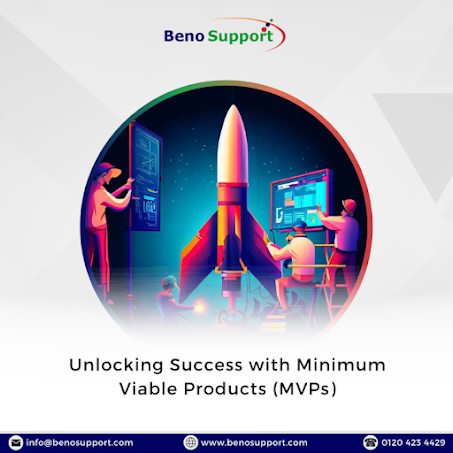Developing a Successful MVP: A Blueprint for Startups
In today's fast-paced and competitive
business landscape, the concept of a Minimum Viable Product (MVP) has become
increasingly crucial. In the world of startups, the term
"MVP" holds a special place. No, we're not talking about Most
Valuable Player in sports, but rather, the Minimum Viable Product. The MVP is a
crucial milestone in the journey of any startup, acting as the first step towards
realizing your grand vision. In this blog, we'll unravel the blueprint for
developing a successful MVP that sets your startup on the path to success.
1. Start with a Clear Vision:
Every successful MVP begins with a clear and concise vision. What problem are you
solving? Who is your target audience? What unique value will your product
offer? Answering these questions helps you define the scope of your MVP and
ensures that you're building something people actually need.
2. Prioritize Features Wisely:
One of the biggest pitfalls in MVP development is feature bloat. Avoid the temptation to include every
possible feature in your first iteration. Instead, focus on the core functionalities that address your audience's pain points. Remember, the MVP is about proving your concept, not delivering a final product.
3. Embrace Simplicity:
"Simplicity is the ultimate sophistication," said Leonardo da Vinci, and it holds true in MVP development. Keep your user interface clean and intuitive. The goal is to offer a seamless user experience with minimal distractions. Complexity can lead to confusion and frustration, which are detrimental to your MVP's success.
4. Rapid Prototyping and Testing:
Once you have a basic version of your product, it's time to put it in the hands of
your target audience. Gather feedback, analyze user behavior, and be prepared to iterate. This feedback loop is invaluable for refining your MVP into a product that truly resonates with users.
5. Build Scalable Architecture:
While
your MVP may be minimal, it's essential to build on a scalable architecture.
This ensures that as your user base grows, your system can handle the load
without major overhauls. Scalability is critical for long-term success.
6. Invest in Quality Assurance:
A successful MVP should not only function well but also be reliable and bug-free.
Invest in thorough quality assurance testing to catch and fix issues before
they reach your users.
7. Measure Key
Metrics:
Define the key performance indicators (KPIs) that matter most for your startup.
Whether it's user engagement, conversion rates, or retention, continuously monitor and analyze these metrics. They provide insights into your MVP's performance and guide your future development efforts.
8. Iterate and Evolve: Your MVP is not the end; it's just the beginning. Use the insights gathered from user feedback and analytics to iterate and improve your product. Successful startups embrace a culture of constant improvement.
Conclusion:
Developing a successful MVP is a critical phase in the life of a startup. It's the moment
when your idea takes its first steps toward becoming a reality. By starting
with a clear vision, prioritizing features, embracing simplicity, testing
rigorously, building for scalability, ensuring quality, measuring key metrics,
and iterating relentlessly, you lay a solid foundation for your startup's
growth. Remember, the journey of a thousand miles begins with a single step,
and in the startup world, that first step is your MVP.
Software services provide By Beno support encompasses a wide
range of offerings, with MVP (Minimum Viable Product) development standing out
as a vital component. By
embracing software services, organizations gain a competitive edge, adapt to
changing market needs, and pave the way for digital transformation.



.jpg)
Comments
Post a Comment